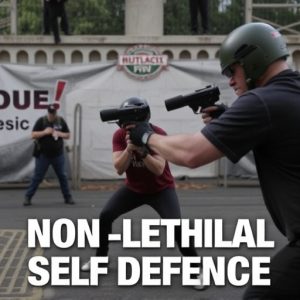Stun Gun Muscle Incapacitation: Duration, Safety, and Charging Guide
Stun guns' effectiveness hinges on proper charging, using recommended chargers and batteries, p…….
Stun guns' effectiveness hinges on proper charging, using recommended chargers and batteries, per manufacturer guidelines, for optimal amperage and voltage delivery. Improper charging can decrease performance and safety. Target size, muscle mass, temperature, humidity also impact response time. Adhering to safety protocols, keeping stun guns out of children's reach, understanding local laws (varies widely), and using them only as a last resort enhances user well-being. "How to charge stun gun properly" is crucial for maximizing incapacitation potential while ensuring reliable operation in critical situations.
“Uncover the secrets behind muscle incapacitation times from stun guns—a critical aspect of personal defense. This comprehensive guide explores the science behind these devices, delving into factors like amperage and voltage that impact their effectiveness. Learn the optimal charging techniques with a step-by-step guide to ensure your stun gun is ready when you need it. Additionally, discover safety precautions and legal considerations, including duration and aftereffects, to make informed decisions. Master the art of stun gun usage with our expert insights on how to charge it properly.”
- Understanding Muscle Incapacitation from Stun Guns
- Factors Affecting Stun Gun Effectiveness
- The Role of Amperage and Voltage
- Charging Your Stun Gun: A Step-by-Step Guide
- Safety Precautions When Using a Stun Gun
- Legal Considerations: Duration and Aftereffects
Understanding Muscle Incapacitation from Stun Guns
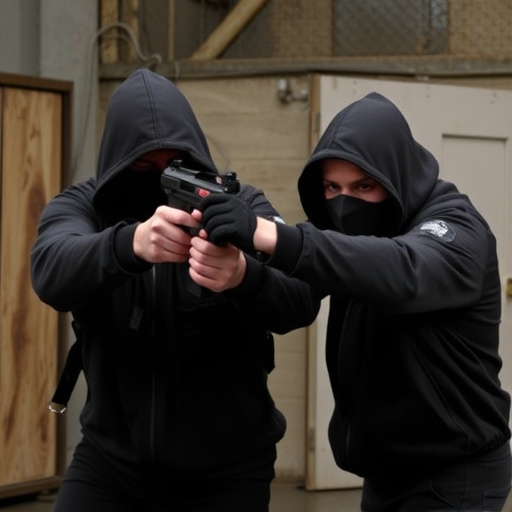
Stun guns, also known as electroshock weapons, work by delivering a powerful electric shock to disrupt muscle control in the target. Understanding how long this incapacitation lasts is crucial for users’ safety and effectiveness. The duration of muscle paralysis from a stun gun varies depending on several factors, including the device’s voltage, the contact points made with the target, and their body mass. Typically, a single stun gun shot can temporarily disable an individual for 3 to 5 minutes. However, this period may extend or reduce based on the specific circumstances of use.
Proper charging of your stun gun is vital to ensure its optimal performance during critical situations. Learning how to charge it correctly ensures that you have a reliable source of power when needed. Following manufacturer guidelines for recharging and maintenance will help guarantee that your stun gun delivers the intended shock, thereby maximizing its incapacitation potential while ensuring user safety.
Factors Affecting Stun Gun Effectiveness
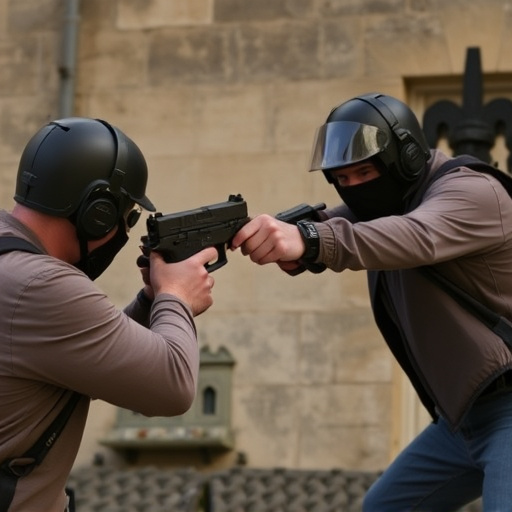
The effectiveness of a stun gun is influenced by several factors that go beyond its design and power output. One critical aspect is the user’s proper charging technique. Stun guns, like any electrical device, operate on a battery, and understanding how to charge them correctly is essential for optimal performance. Users should follow the manufacturer’s guidelines meticulously, ensuring they use compatible batteries and chargers. Incorrect charging can lead to reduced energy delivery, rendering the stun gun less effective when needed.
Another key factor is the target’s physical attributes and reaction. The size and muscle mass of an individual can significantly impact how long a stun gun incapacitates them. Larger individuals with more robust muscles may require higher voltage or longer-lasting charges to achieve the same level of immobilization as someone smaller in stature. Environmental conditions, such as temperature and humidity, also play a role, potentially affecting battery performance and target response time.
The Role of Amperage and Voltage
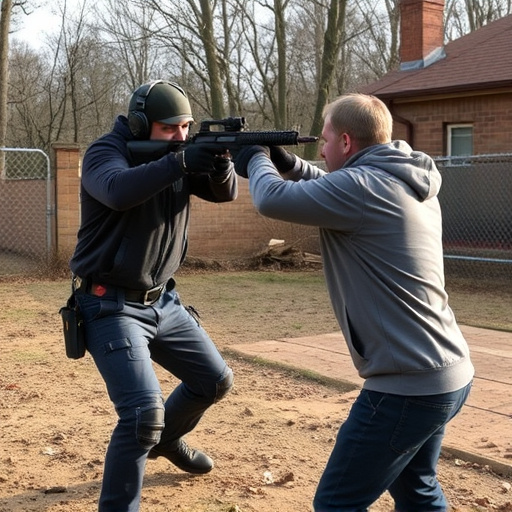
The effectiveness of a stun gun largely depends on two key factors: amperage and voltage. Amperage, measured in amps, represents the amount of electrical current flowing through the device. A higher amperage means more power, resulting in longer muscle incapacitation durations. Voltage, on the other hand, determines the force or pressure of the electric shock.
Properly charging a stun gun is crucial to ensure optimal performance. The right balance of amperage and voltage ensures the stun gun delivers a powerful but safe shock. Following the manufacturer’s guidelines for charging, including using the recommended chargers and battery types, is essential. This not only prolongs the lifespan of the device but also guarantees its reliability when needed.
Charging Your Stun Gun: A Step-by-Step Guide

Charging a stun gun properly is a crucial step in ensuring its effectiveness during an emergency. Start by removing any protective covering or case from your stun gun to access the charging port. Next, locate the charging cable and connector; these are usually designed to fit seamlessly into the device. Connect the cable securely, ensuring all connections are firm and locked into place.
Follow the manufacturer’s instructions for charging duration and frequency. Most modern stun guns use lithium-ion batteries that can be charged via USB or dedicated chargers. Allow the battery to charge fully, typically indicated by a green light on the device. Regular charging is essential, as it maintains optimal performance and prolongs the lifespan of your stun gun.
Safety Precautions When Using a Stun Gun
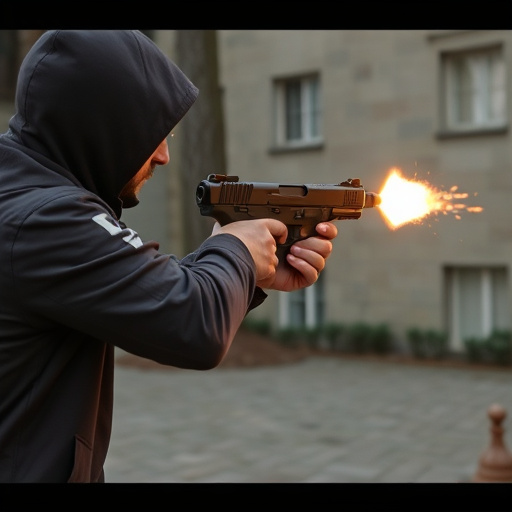
When using a stun gun, safety precautions are paramount. Always ensure the device is charged correctly; proper charging is crucial for optimal performance and user safety. Follow the manufacturer’s guidelines meticulously to avoid any accidents. Keep the stun gun out of reach of children and store it in a secure location, away from curious minds. Familiarize yourself with local laws regarding stun guns to prevent any legal complications.
Before deploying the stun gun, assess the situation carefully. Targeting specific body areas like the upper arm or thigh is recommended for maximum effectiveness while minimizing harm. Never aim at the head or neck as it may result in severe injury. Remember, a stun gun’s primary purpose is to incapacitate temporarily; its use should be a last resort for self-defense.
Legal Considerations: Duration and Aftereffects
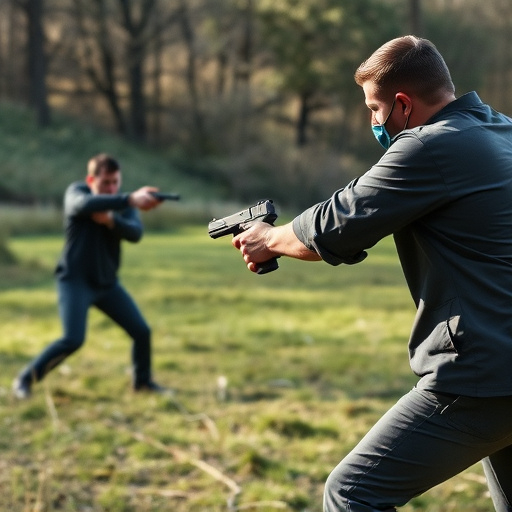
When considering the use of a stun gun, it’s crucial to understand not only its effectiveness but also the legal implications and aftereffects. The duration of muscle incapacitation from stun guns varies significantly depending on factors such as the model of the device, the user’s body type, and the applied voltage. In many jurisdictions, stun guns are classified as less-lethal weapons, allowing their use by authorized individuals for self-defense purposes. However, the specific regulations differ widely; some regions have strict guidelines on who can own and carry a stun gun, while others have minimal restrictions.
Proper charging of the stun gun is a critical aspect that often goes unnoticed but plays a significant role in its performance. Following the manufacturer’s instructions for charging ensures optimal output during use. Moreover, understanding the legal framework surrounding stun guns in your area can help you make informed decisions about their acquisition and usage, ensuring compliance with local laws. This knowledge not only protects individuals from potential legal repercussions but also enhances safety when faced with situations requiring self-defense measures.
The duration of muscle incapacitation from stun guns varies based on several factors, including amperage, voltage, and individual variability. Understanding these elements is crucial for effective deployment and safety. Proper charging, as outlined in our step-by-step guide, ensures optimal performance. Safety precautions and legal considerations, such as understanding the permitted use duration, are essential to responsible stun gun ownership. By following best practices, users can maximize the tool’s effectiveness while mitigating potential aftereffects. Remember, knowledge is power, and with the right approach, you can ensure your stun gun serves its purpose when needed most.

